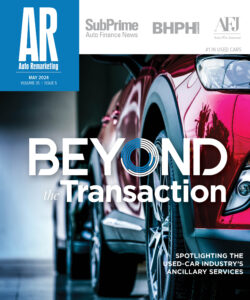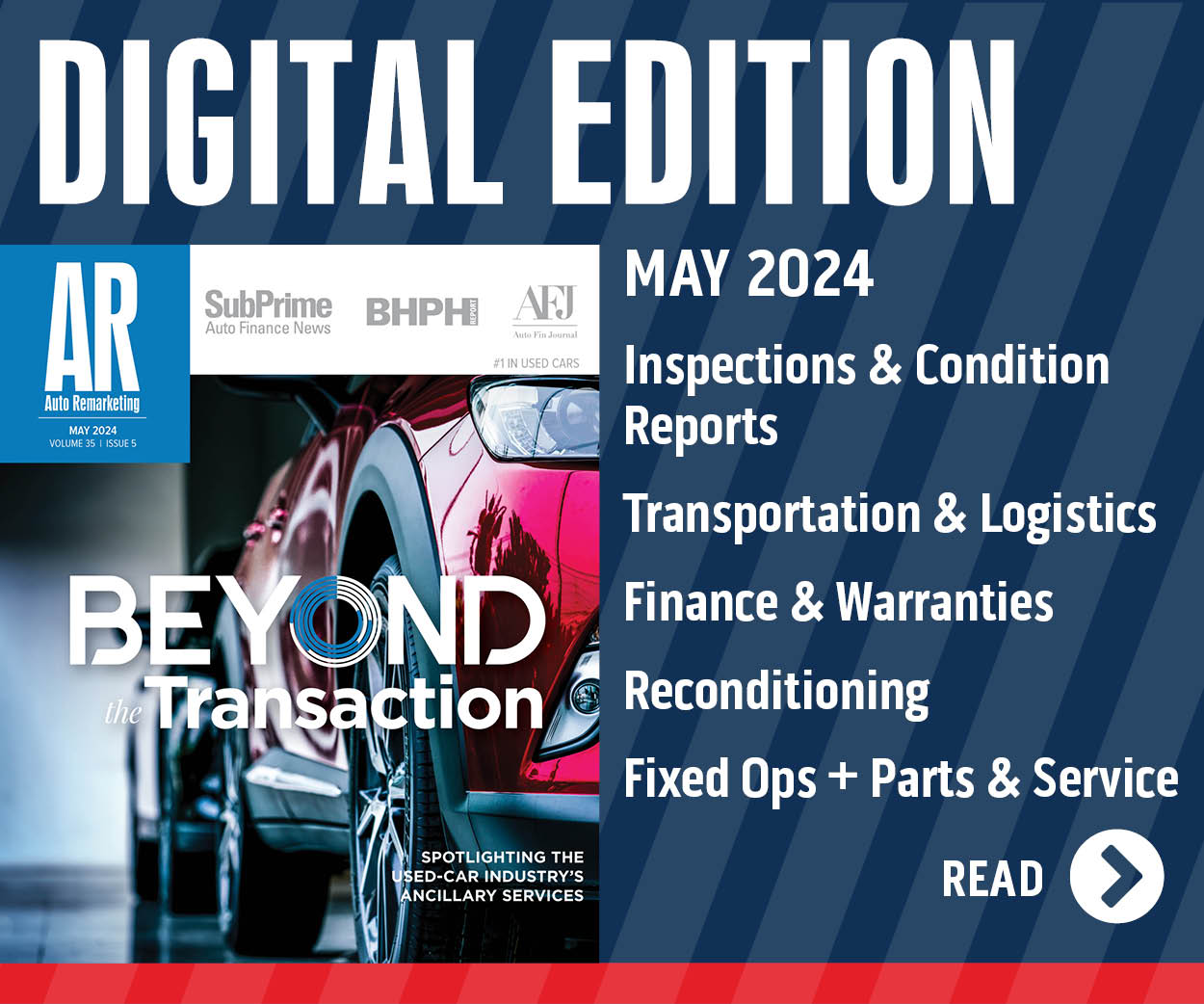COMMENTARY: AI-powered vehicle delivery unveiled

In the rapidly evolving landscape of the automotive industry, the integration of artificial intelligence in vehicle delivery is not just a futuristic concept but a present reality reshaping the Direct-to-Consumer (DTC) paradigm. This transformation, marked by advanced digital solutions, is setting new standards for efficiency, accuracy, and customer satisfaction.
In this article, we delve into the nuances of this significant shift, exploring the profound impact AI is having on the vehicle delivery process from OEMs to customers’ doorsteps.
Evolution of vehicle delivery: From traditional to digital
The journey of vehicle delivery has undergone a substantial transformation over the years, not least Hyundai’s recently announced collaboration with Amazon. Traditionally, the buying process involved several intermediaries, from manufacturers to dealerships, finally reaching the customer. This system, while functional, often lacked transparency and efficiency, leading to a disjointed customer experience.
Today, the rise of e-commerce and digital platforms has revolutionized this model. Consumers, empowered by technology, increasingly prefer direct interactions with manufacturers. This preference has paved the way for DTC models, where OEMs bypass traditional dealership networks to sell directly to customers. A report by McKinsey & Company highlights the growing inclination towards online car purchases: “Fewer than 3 percent of customers say they purchase vehicles fully online, but 29 percent of consumers indicate that they want to buy their next car entirely online.”
AI: The game-changer in car inspection and delivery
At the core of this DTC revolution is the critical role of car inspection and delivery. Ensuring that a vehicle is in pristine condition before it reaches the customer is paramount. Traditionally, this process was manual and time-consuming, susceptible to human error. The advent of AI has been a game-changer in this realm.
AI-powered inspection systems use advanced algorithms and machine learning to assess a vehicle’s condition with remarkable precision. These systems, often employing stationary cameras, can quickly identify even the minutest defects or inconsistencies, far surpassing the capabilities of manual inspections.
But the innovation doesn’t stop at pre-delivery checks. AI is equally transformative at the point of delivery. Mobile inspection apps, equipped with AI, are now used by delivery personnel to conduct real-time inspections upon vehicle drop-off. These tools not only streamline the process but also enhance transparency, allowing customers to view an accurate assessment of their vehicle’s condition upon arrival.
The digital trade-in: AI’s answer to an age-old challenge
Trade-ins are a vital component of the automotive sales process, yet they have traditionally been fraught with challenges, particularly in assessing the vehicle’s condition accurately. AI has provided a solution here as well. Using AI-powered assessment tools, OEMs can now offer fair and transparent evaluations of trade-in vehicles, simplifying the process for both the seller and the buyer.
These AI systems analyze extensive data points on the vehicle, from external body condition to internal mechanics, ensuring an objective evaluation. This digital approach not only saves time, but also enhances customer confidence in the trade-in process, an essential factor in the success of DTC sales.
AI’s role in enhancing sustainability and compliance
The integration of AI in vehicle delivery extends beyond efficiency and customer satisfaction. It also plays a crucial role in addressing environmental concerns and regulatory compliance. AI systems can optimize delivery routes, reducing carbon emissions associated with transportation.
Furthermore, by ensuring accurate vehicle inspections and minimizing the need for returns or repairs, AI contributes to reducing the environmental footprint of the delivery process.
From a regulatory standpoint, AI helps OEMs navigate the complex web of compliance requirements in different markets. By maintaining accurate digital records and ensuring adherence to quality standards, AI-powered systems aid in meeting regulatory obligations, an increasingly important consideration as the automotive industry faces stricter environmental and safety regulations.
We will delve deeper into the future implications of AI in vehicle delivery, exploring emerging technologies and their potential impact on the automotive industry, and the challenges and opportunities that lie ahead.
Emerging technologies and future of AI in vehicle delivery
As we gaze into the future of vehicle delivery, it’s evident that AI is just the tip of the iceberg. Emerging technologies like blockchain, augmented reality (AR), and the Internet of Things (IoT) are set to further revolutionize this space. Blockchain, for instance, offers unparalleled security and transparency in transaction records, making it an ideal technology for managing vehicle sales and ownership histories. AR could transform customer experiences, allowing virtual inspections and interactive features for buyers. Meanwhile, IoT devices can provide real-time monitoring and diagnostics of vehicles during transit, ensuring they arrive in optimal condition.
These advancements are not mere speculations. Industry leaders and startups alike are investing heavily in these technologies, recognizing their potential to create a more efficient, transparent, and customer-centric delivery process. For instance, several OEMs are experimenting with AR to provide customers with immersive vehicle demonstrations and inspections remotely.
Challenges ahead: Balancing innovation with practicality
However, the road ahead is not without its challenges. One of the primary concerns is the balance between technological innovation and practical implementation. While AI and related technologies offer numerous benefits, they also require significant investment in terms of infrastructure, training, and development. The automotive industry must navigate these financial and logistical hurdles to fully leverage AI’s potential.
Another challenge is the integration of these technologies within the existing automotive ecosystem. Ensuring compatibility between new AI systems and legacy systems within OEMs and third-party vendors is crucial for a seamless transition. Moreover, as these technologies evolve, so must the regulatory frameworks governing them. The industry must work closely with regulatory bodies to ensure that advancements in vehicle delivery technology comply with evolving laws and regulations.
Opportunities for collaboration and growth
Despite these challenges, the opportunities for innovation and growth in vehicle delivery are immense. Collaborations between automotive companies, tech giants, and startups are likely to become more prevalent, driving forward technological advancements. These partnerships can harness the strengths of each sector – the automotive industry’s deep understanding of vehicles and customer needs, combined with the tech industry’s expertise in AI and digital solutions.
Furthermore, there’s a significant opportunity for AI to enhance customer personalization and engagement. By analyzing customer data, AI can offer tailored vehicle recommendations, personalized financing options, and customized delivery experiences. This level of personalization not only enhances customer satisfaction but also fosters brand loyalty and repeat business.
Sustainability and AI: Toward a greener future
An often-overlooked aspect of AI in vehicle delivery is its potential to drive sustainability. By optimizing delivery routes and schedules, AI can significantly reduce carbon emissions associated with vehicle transportation. Additionally, AI’s precision in vehicle inspections and maintenance predictions can lead to longer vehicle lifespans and reduced resource waste. As the world increasingly focuses on environmental sustainability, AI’s role in promoting greener practices in the automotive industry becomes more crucial.
Conclusion: Navigating the AI-driven road ahead
As we conclude our exploration of the AI-driven transformation in vehicle delivery, it’s clear that this is a pivotal moment for the automotive industry. AI and related technologies are not just altering how vehicles are delivered; they are redefining the very fabric of the industry’s relationship with its customers. The integration of AI promises a future of enhanced efficiency, increased transparency, and unparalleled customer experiences.
However, this future is not without its challenges. Balancing innovation with practical implementation, ensuring technological compatibility, and navigating evolving regulatory landscapes are hurdles that the industry must overcome. Yet, the opportunities for collaboration, growth, and sustainability are immense.
The automotive industry stands at the threshold of a new era, one where AI and technology lead the way. As manufacturers, dealers, and consumers navigate this changing landscape, the promise of a more efficient, transparent, and customer-centric approach to vehicle delivery shines brightly on the horizon. The journey ahead is exciting, and the industry must be ready to embrace the AI-driven transformation with open arms.
Ron Soreanu is general manager of international business at Ravin AI.

 View The Latest Edition
View The Latest Edition

